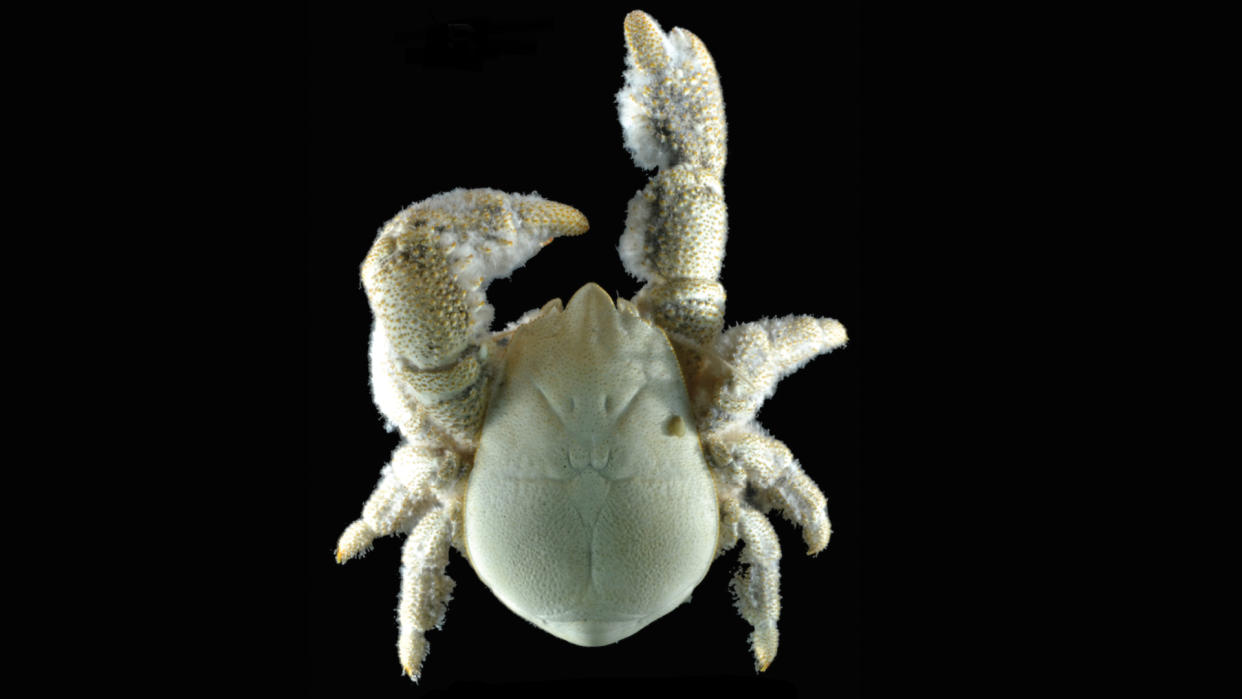Hoff crab: The hairy-chested crustacean that farms bacteria on its hairs


Name: Hoff crab (Kiwa tyleri)
Where it lives: East Scotia Ridge, Southern Ocean
What it eats: Bacteria
Why it's awesome: It turns out that the Yeti does exist — or at least it does underwater. Named after the abominable snowman, this family of deep-sea squat lobsters was first discovered in 2005. The first example was nicknamed the yeti crab due to the crustacean's white coloration and hairiness. This name was extended to the rest of the family as more species were discovered and described. Later, one hairy-chested species (Kiwa tyleri) was nicknamed "The Hoff" after "Baywatch" actor David Hasselhoff.
But these nicknames are the least-fascinating aspects of this small crustacean. K. tyleri manages to survive in one of the most extreme environments on the planet. In 2010, a remotely operated vehicle dove down to the hydrothermal vents on the East Scotia Ridge in the Southern Ocean and found these yeti crabs densely packed together, with up to 700 individuals per square meter.
Life in these volcanic hydrothermal vents is precarious. The liquid ejected from the vents can reach a scorching 721.04 degrees Fahrenheit (382.8 degrees Celsius), yet not far from the vents, the Antarctic waters are freezing. The crabs must survive in the small area between the two extremes.
Related: The amazing world of Antarctic yeti crabs
Scientists discovered that females with well-developed embryos venture away from the vents. The scalding waters of the hydrothermal vents may not be hospitable for embryonic development, so the females move away and release their larvae into cooler waters. This journey into the cold has a visibly damaging effect on the females, which breed only once before dying.
RELATED STORIES
—Pom pom crab: The crustacean that uses anemones as boxing gloves
—Massive expanse of towering hydrothermal vents discovered deep in the Pacific
—Tiny 'immortal' crab entombed in amber discovered in a first of its kind
And what is there to eat in a hydrothermal vent? Not much. But the Hoff crab has found a way to snag grub, and it involves the animal's hairs, known as setae. These setae, which cover the crab's entire belly, harbor bacteria that the crab harvests and eats.
Although they are called yeti crabs, these critters aren't actually true crabs. Instead, they are squat lobsters, and like a number of other decapods, such as king crabs and hermit crabs, they are crab-like. This strange process whereby many different animals end up looking like crabs is a type of convergent evolution known as carcinization.

